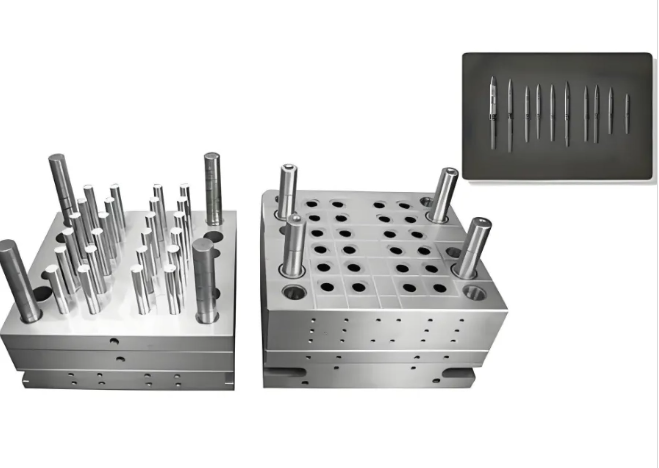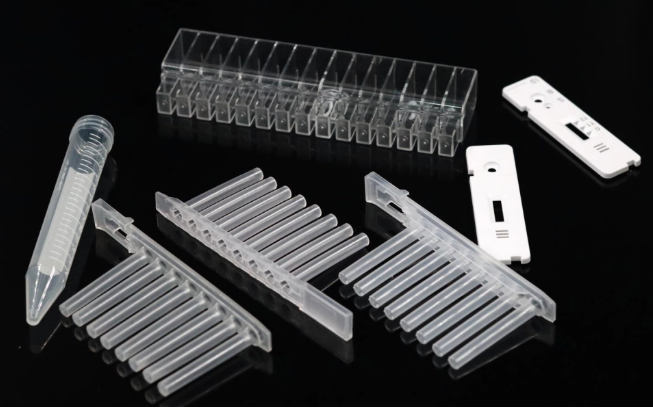Views: 0 Author: Site Editor Publish Time: 2025-07-25 Origin: Site











The medical device industry is one of the most regulated sectors globally, with stringent standards to ensure patient safety and product efficacy. At the heart of this industry lies the crucial role of Medical Moulds, which are essential for manufacturing precise and reliable medical components. High-precision medical moulds are indispensable in producing devices that meet the rigorous demands of healthcare applications. This article delves into the challenges and solutions in meeting the exacting standards of medical devices through advanced moulding technologies.

High-precision medical moulds are the foundation for creating components that require exceptional accuracy and consistency. In medical applications, even the slightest deviation can lead to significant consequences, potentially affecting patient health and safety. Therefore, manufacturers invest heavily in precision moulding equipment and processes to ensure that each component meets the exact specifications required.
One of the critical factors in achieving high precision is the use of advanced Computer Numerical Control (CNC) machining techniques. CNC machines enable the production of mould components with tolerances as tight as ±0.001 inches. This level of precision is essential for devices such as surgical instruments, implants, and diagnostic equipment, where accuracy is paramount.
The medical device industry is governed by regulations such as the ISO 13485 standard, which specifies requirements for a comprehensive quality management system. Complying with these standards presents several challenges for manufacturers of medical moulds:
Selecting the right material is crucial. Materials must be biocompatible, sterilizable, and free from contaminants. This necessitates stringent quality checks and certifications for every batch of raw material used in the moulding process.
Achieving the required level of precision demands investment in cutting-edge machinery and skilled technicians. The high costs associated with precision equipment can be a barrier for some manufacturers.
Navigating the complex regulatory landscape requires a thorough understanding of international standards and regulations. Manufacturers must ensure that their processes and products comply with all relevant guidelines, which can vary by region and device type.
Advancements in technology have provided solutions to many of the challenges faced in high-precision medical moulding. Innovations include:
Micro-injection moulding allows for the production of extremely small and intricate components with high precision. This technology is essential for manufacturing parts used in minimally invasive surgical instruments and implantable devices.
Integrating automation reduces human error and increases production efficiency. Robotic systems can handle components in cleanroom environments, ensuring that products remain contaminant-free.
The development of new biocompatible polymers and composites has expanded the possibilities for medical device design. These materials offer improved performance characteristics such as flexibility, strength, and chemical resistance.
Maintaining strict quality control is non-negotiable in medical mould manufacturing. Techniques employed include:
SPC involves using statistical methods to monitor and control the manufacturing process. This ensures that the process operates at its full potential to produce conforming products with minimal waste.
Before full-scale production, processes are validated to confirm they can consistently produce products meeting specifications. Ongoing verification ensures that production remains within the defined parameters.
Producing medical components often requires a cleanroom environment to prevent contamination. Cleanrooms control variables such as air quality, temperature, and humidity.
Examining real-world applications highlights the importance and impact of precision moulding:
The mass production of disposable syringes requires high-speed injection moulding machines capable of producing components with tight tolerances. Any defects can lead to leakage or inaccurate dosing, posing risks to patient safety.
By utilizing High-Precision Medical Moulds, manufacturers can ensure that each syringe meets the necessary standards for medical use.
Implants such as stents or orthopedic devices must be manufactured to exact dimensions to function correctly within the human body. Precision moulding ensures that these devices meet the strict regulatory standards required for implantation.
To meet the stringent standards of medical devices, manufacturers should adhere to the following best practices:
Investing in employee training ensures that staff are knowledgeable about the latest technologies and regulatory requirements. Skilled technicians are better equipped to operate complex machinery and implement quality control measures effectively.
Working closely with suppliers helps in selecting the most suitable materials and staying ahead of new material developments. This collaboration can lead to improved product performance and compliance with medical standards.
Adopting comprehensive quality management systems like ISO 13485 helps in organizing processes, improving efficiency, and ensuring regulatory compliance. It provides a framework for consistent product quality and risk management.
Adherence to Medical Moulds Industry Standards is essential for maintaining product quality and safety. These standards, developed by international organizations, outline the requirements for design, production, and testing of medical devices.
Compliance with industry standards not only ensures regulatory approval but also enhances the manufacturer's reputation for quality and reliability. It fosters trust among healthcare providers and end-users, which is critical in the medical sector.
The medical moulding industry is continuously evolving with advancements in technology and materials. Emerging trends include:
Also known as 3D printing, additive manufacturing is being integrated into mould making to create complex geometries and reduce lead times. It offers the potential for customized medical devices tailored to individual patient needs.
The development of smart materials that can respond to physiological changes opens new avenues in medical device design. Moulding processes will need to adapt to handle these advanced materials effectively.
There is a growing emphasis on sustainable manufacturing practices. This includes using biodegradable materials and reducing waste through efficient moulding processes.
In today's interconnected world, collaboration across the global supply chain is vital. Manufacturers must coordinate with international partners to source materials, share technological advancements, and ensure compliance with varying regional regulations.
Effective supply chain management enhances responsiveness to market demands and can mitigate risks associated with geopolitical uncertainties or disruptions such as pandemics.

Utilizing advanced simulation software allows for virtual testing of mould designs before physical prototypes are created. This can significantly reduce development time and costs while ensuring that the moulds will perform as expected under real-world conditions.
Simulation tools can predict potential issues such as warping, shrinkage, or internal stresses, enabling engineers to optimize designs proactively.
With the regulatory landscape constantly evolving, manufacturers must stay abreast of changes to standards and regulations such as FDA guidelines in the United States or the European Union's Medical Device Regulation (MDR).
Developing robust compliance strategies involves regular audits, investing in regulatory expertise, and implementing flexible processes that can adapt to new requirements without significant operational disruptions.
Continuous investment in R&D is essential for innovation in medical moulding. This includes exploring new materials, improving manufacturing processes, and developing novel medical device designs.
Companies that prioritize R&D are better positioned to lead in the market by offering cutting-edge solutions that meet emerging healthcare needs.
High-precision medical moulds are critical in producing medical devices that meet stringent industry standards. Manufacturers face numerous challenges, including maintaining precision, ensuring material compliance, and navigating complex regulations. By embracing technological innovations, adhering to best practices, and investing in quality management systems, manufacturers can overcome these challenges.
The future of medical moulding is promising, with advancements in materials science, manufacturing technologies, and global collaboration paving the way for improved patient care. Maintaining a commitment to excellence and compliance ensures that the industry continues to deliver safe, effective medical devices that meet the highest standards of quality.
For manufacturers seeking to excel in this field, understanding and implementing the principles of high-precision moulding is essential. By focusing on innovation and adhering to Medical Moulds Industry Standards, companies can achieve success and contribute significantly to the healthcare industry.
